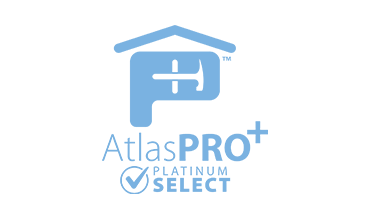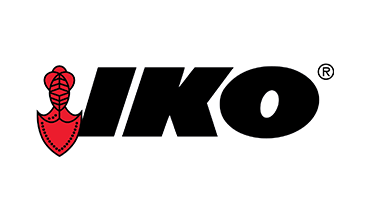Getting your commercial roof inspected is like giving your building a thorough check-up. Regular roof inspections can catch small problems before they turn into big ones, saving you headaches and costs down the line. In Springfield, MO, where weather can vary from hot summers to chilly winters, ensuring your roof is in good shape is even more critical. A well-kept roof not only protects your business from the elements but also boosts its curb appeal, potentially drawing in more customers.
Think of a roof inspection as an investment in your building’s future. By keeping your roof in tip-top shape, you’re helping prolong its life, ensuring it stays sturdy and effective. With unpredictable weather patterns, Springfield businesses cannot afford to overlook the importance of maintaining their roofs. A proactive approach can make all the difference, helping business owners avoid unexpected expenses and ensuring the safety of everyone under that roof.
Preparing for a Commercial Roof Inspection
Before the inspector arrives, there are a few simple steps you can take to make the process smooth and effective. Preparing for a roof inspection isn’t complicated, but it does require a bit of planning. Here’s a quick list to help your business get ready:
– Clear Access Points: Make sure that all roof entrances are accessible. Remove any obstructions or debris around access ladders and roof hatches. Ensuring clear pathways allows inspectors to do their job more effectively.
– Organize Paperwork: Keep any previous inspection reports or repair records handy. This information can be valuable for the inspector to assess any changes or ongoing issues.
– Safety First: Ensure that any safety equipment required for high places, like harnesses or ladders, are in good condition. Having these items checked beforehand adds an extra layer of safety and preparedness.
– Notify Staff: Let your employees know about the scheduled inspection. This minimizes disruptions and ensures that everyone is aware of any access restrictions on the day.
Following these steps ensures that your inspection is thorough and efficient, helping you get the most value from it. Being prepared not only helps the inspector perform a more accurate assessment but also gives you peace of mind knowing that your business is taking the necessary steps to keep its roof in great condition. Springfield businesses that take time to prepare properly can anticipate smoother inspections and quicker turnaround for any required follow-up actions.
What Inspectors Look For
During a commercial roof inspection, inspectors focus on several key areas to determine the roof’s condition. They start by examining the roof material’s state, checking for any wear and tear that might suggest aging or damage. Inspectors look for any missing, loose, or damaged shingles. If you have a flat roof, they will check for blisters, punctures, or splits. These problems might seem minor but can lead to bigger issues if not addressed.
Inspectors also pay close attention to signs of water damage or leaks. They search for dark spots or stains, which can hint at the presence of moisture. Identifying leaks early is crucial, as water can cause significant damage not just to the roof, but to the building’s structure. Inspections also include assessing the roof’s overall structure. Inspectors make sure that the roof is stable, checking for any sagging or signs of weakness. The drainage system will be another focus—ensuring gutters and downspouts are clear and functioning properly to prevent water buildup.
Common Findings And Their Implications
During an inspection, inspectors often discover issues that can impact a commercial roof’s longevity. Common findings include small leaks, which might initially seem harmless. However, they can cause damage to the roof structure over time, leading to costly repairs. It’s not uncommon to find damaged flashing, the thin material used for sealing the roof edges, which can also allow water to seep into the building.
Subpar drainage can be another typical issue. If water doesn’t drain properly, it can pool on the roof, leading to further damage. This standing water can eventually weigh the roof down, weakening its integrity. In Springfield, where weather can turn quickly, these seemingly minor issues can escalate when left unattended, especially during heavy rain or snowstorms.
Being aware of these potential problems allows business owners to take timely action, minimizing any negative effects on the building and extending the roof’s life. Addressing findings promptly can prevent more extensive damage and save money in the long run.
Post-Inspection Steps
After receiving the inspection report, it’s time to take action based on the findings. Prioritize any urgent repairs first, especially those relating to leaks or structural issues. These can pose immediate risks to your building and should be tackled swiftly to prevent costly damages.
Here’s how to manage the post-inspection process effectively:
– Review the Report Thoroughly: Go through the findings with the inspector if possible. This helps in understanding the seriousness of each issue and prioritizing what needs attention.
– Plan for Repairs: Create a list of repairs based on the urgency in the report. Start with critical fixes to prevent immediate problems, and then plan for other required maintenance.
– Schedule Maintenance: Maintenance isn’t just about fixing problems; it’s about prevention. Set up regular maintenance schedules to keep your roof in good condition and avoid future surprises.
– Budget Accordingly: Finally, allocate budget for both immediate repairs and preventive maintenance. Having a financial plan ensures that you’re always prepared for any necessary work without disruptions to your operations.
Looking Ahead: Keeping Your Roof in Check
In summary, staying on top of your commercial roof’s condition is an ongoing task that calls for regular attention and care. Although inspections might initially seem like an extra step, they are key to the safety and efficiency of your business operations. By understanding what inspectors look for and addressing issues promptly, you not only protect your investment but also enhance the longevity of your building.
Whether it’s scheduling bi-annual inspections or ensuring your maintenance practices are up to par, Springfield businesses can greatly benefit from proactive roof management. With proper care, your roof will keep your business sheltered, helping you focus on what matters most. Planning ahead and keeping a routine in place can ease the stress of dealing with unexpected issues, allowing you to enjoy the peace of mind that comes with a well-maintained roof.
To ensure your business stays protected year-round, consider working with experienced commercial roofing contractors in Springfield. Over the Top Roofing & Restoration is here to help you maintain your roof’s condition and handle any needed repairs with care. Reach out today to schedule an inspection or get answers to your roofing questions.




